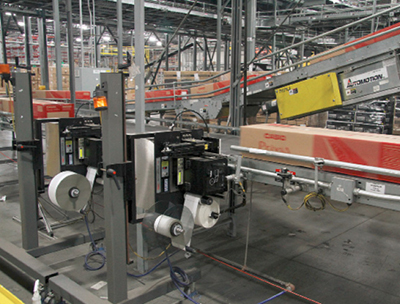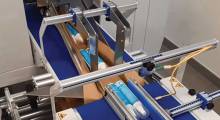E-commerce shippers face three main challenges with automatic label printing and application with in- and out-bound packages, says Chris Erbach, marketing communications manager at Weber Packaging Solutions: speed, box-height variability, and downtime.
“They’re handling so many orders with customer expectations for quick delivery and they need to move items through fast,” he explains. “But, they’re selling so many different items that there is relatively little consistency in terms of size—yet they have to get the same label on each package in a consistent location.”
Although it’s possible to pre-sort parcels by height before they reach the labeler, it requires an extra handling step that many facilities would prefer to avoid. Likewise, downtime is another challenge such operations seek to minimize.
“Having a label printer applicator break down and stop the line can be extremely costly,” Erbach continues, “which is why many invest in more than one machine for redundancy. If the primary unit stops, the back-up immediately takes over.”
For many printer applicators, repairs can be time and labor intensive, often requiring the unit to be removed, taken apart and fixed elsewhere on the site.
To address these challenges, Weber recently introduced the L-A 6000 high-speed, variable-height label printer applicator to the North American market. It uses the tamp-blow method to print and apply up to 40 labels per minute to products that vary in height up to 19.68 inches.
A sensor determines the height of the approaching product for labeling, triggering the applicator to move to the correct position at high-speed. “This reduces the travel distance for label application, allowing the unit to label more accurately and up to 50% faster than a printer applicator with a pneumatically driven cylinder,” adds Erbach.
Additionally, the unit is based on modular construction; should one part of the machine fail, an in-house technician can quickly swap out that component line-side, without moving the machine. This feature keeps downtime to a minimum and can even eliminate the need for a back-up unit, adds Erbach.
Article topics










